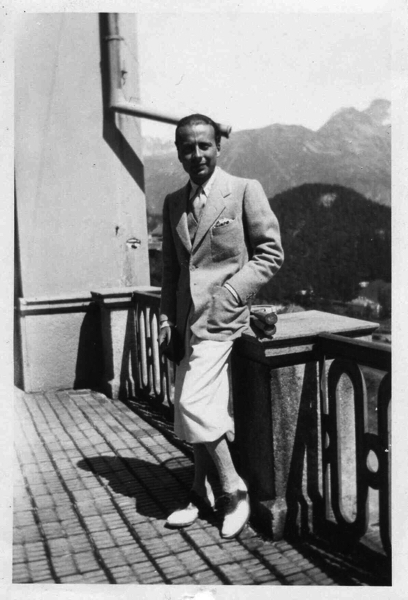Giacinto Scelsi
Anahit (1965) #11’
poème lyrique dédié à Vénus, pour violon et ensemble
In 1965 one of Scelsi’s most perfect and most exquisite creations saw the light of a day, a masterpiece called Anahit, sub-titled Lyrical Poem dedicated to Venus (whose Egyptian name is Anahit), written for solo violin and a chamber orchestra of 18 players : 2 flutes, bass flute, English horn, clarinet, bass clarinet, two horns, trumpet, tenor saxophone, 2 trombones, and a string sextet consisting of two violas, two cellos and two double basses.
With the exception of Kya for clarinet and seven instruments (1959), Anahit is Scelsi’s only concertante piece, although it is not a traditional concerto, but rather a Poem, where the violin is given over exclusively ti the moulding of sound. Scelsi had, the year before, composed his masterwork for solo violin, Xnoybis.
Anahit’s solo part
develops its achievements, it is constantly notated on three staves, (one per string) and the instrument undergoes a scordatura ( G-G-B-D ) only G string remaining unchanged, thereby allowing the same note to be simultaneously heard on several different strings.
The extremely difficult performance demands much tension and concentration, yet the piece was performed in Athens in 1966 soon after its completion, by the French violinist Devy Erlih, one of the pioneers of Scelsi’s music.
Only Hymnos had previously developed harmony as sumptuously as Anahit and the piece owes much of its
It consists of two parts, separated by a short cadenza for the soloist, beginning at the Golden Section. The short orchestral introduction rests on B flat, but ath violin’s entrance on D, the key is established on as G minor. The violin follows a long ascending curve, rising by microtones from D to F-sharp, and the orchestra follows a similar upward move. Again and again, perfect triads and dominant seventh chords crystallyze, only to immediately melt into the glissandi; it is an enticing mystical voyage ! The violin works out the pitches with a wealth of tremolos and oscillations on several strings, but pauses twice during brief orchestral interludes. Just before the cadenza, the harmony condenses onto unison F-sharp , but during this cadenza the violin continues to rise, reaching A-flat. After a short breathing pause, the second cycle begins, again from D, but an octave higher, in a harmonic context of G major. It is shorter than the first, but tenser, more luminous, devoid of orchestral interludes, and also reaching (high) F-sharp, this time as the fifth of B mayor. As the Orchestra fades at the very end, the solitary violin reaches out to G and remains suspended there: it is difficult to imagine a more poetic or moving end !


